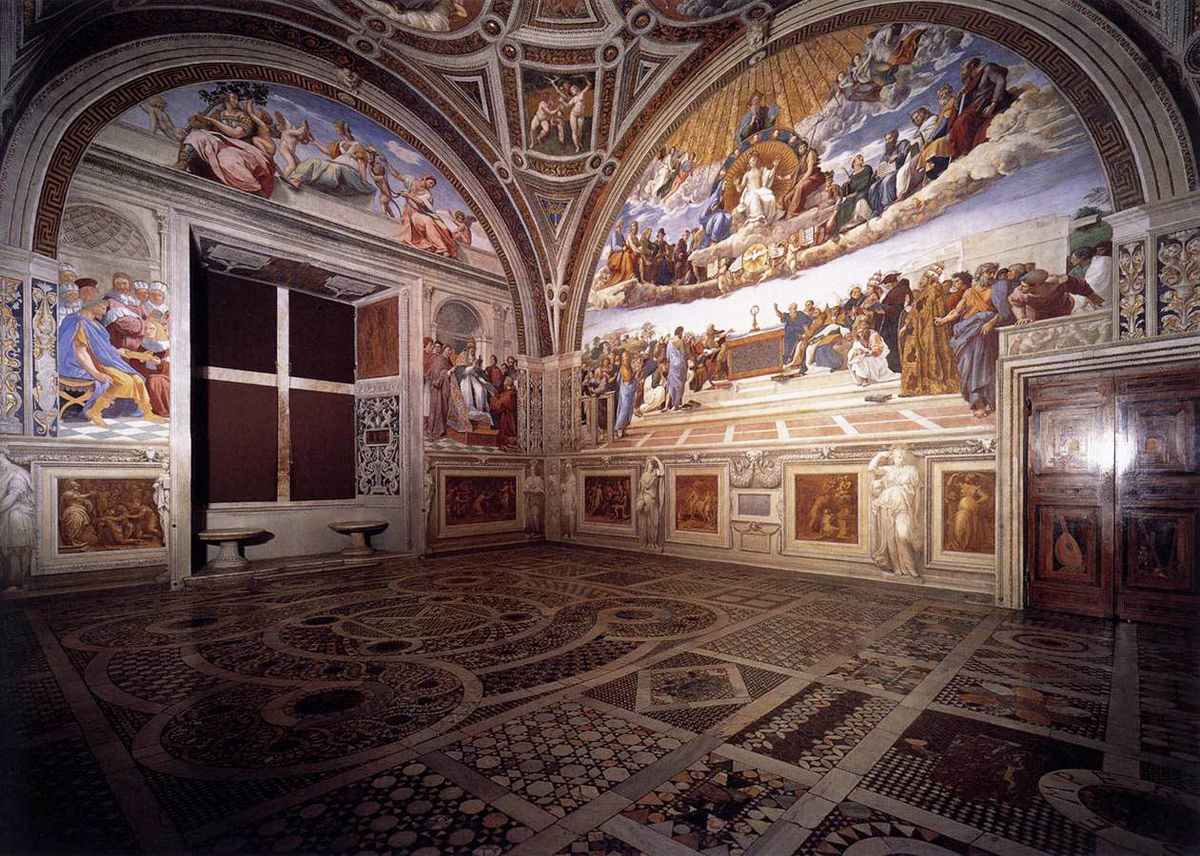
Vatican Museums – The Stanza della Segnatura
The Vatican Museums are about seven kilometers of halls and corridors that showcase the centuries-old treasures of the Popes. It’s a truly incredible place, ranging from Egyptian art to carriages.
One of the highlights of the Vatican Museums is without a doubt the Stanza della Segnatura, a masterpiece by Raphael. The Stanza della Segnatura contains the artist’s most famous frescoes: they represent his debut in the Vatican and mark the beginning of the full Renaissance. The room takes its name from the highest court of the Holy See, the “Segnatura Gratiae et Iustitiae”, presided over by the pontiff and which used to meet in this room around the middle of the 16th century.
Initially, Julius II decided to use the room as a library and private study. And the iconographic program of the frescoes, executed between 1508 and 1511, is linked to this function. Certainly defined by a theologian, it aims to represent the three highest categories of the human spirit: the True, the Good and the Beautiful. The supernatural True is illustrated in the Dispute of the Blessed Sacrament (or theology), the rational one in the School of Athens (or philosophy). The Good is expressed in the depictions of the Cardinal and Theological Virtues and the Law. While the Beautiful is embodied in the Parnassus with Apollo and the Muses. The frescoes of the vault are linked to the scenes below: the allegorical figures of Theology, Philosophy, Justice and Poetry allude in fact to the faculties of the spirit painted on the corresponding walls.
Under Pope Leo X, the room changed, becoming a study and a music room. Here, in fact, he also kept his collection of musical instruments. The original furniture of Julius II’s time was removed and replaced with a new wooden covering, the work of Fra Giovanni da Verona. This extended over all the walls except for the Parnassus wall. The wooden covering, in turn, was probably destroyed following the Sack of Rome in 1527. In its place during the pontificate of Paul III, Perin del Vaga painted a base with chiaroscuro.
Did you like this curiosity? If you want to discover the secrets, legends and mysteries of Rome, download the curiosity app. Download Secret Maps!
And if you want to listen to something interesting, try the first Travel Podcast Platform. Try Loquis!

